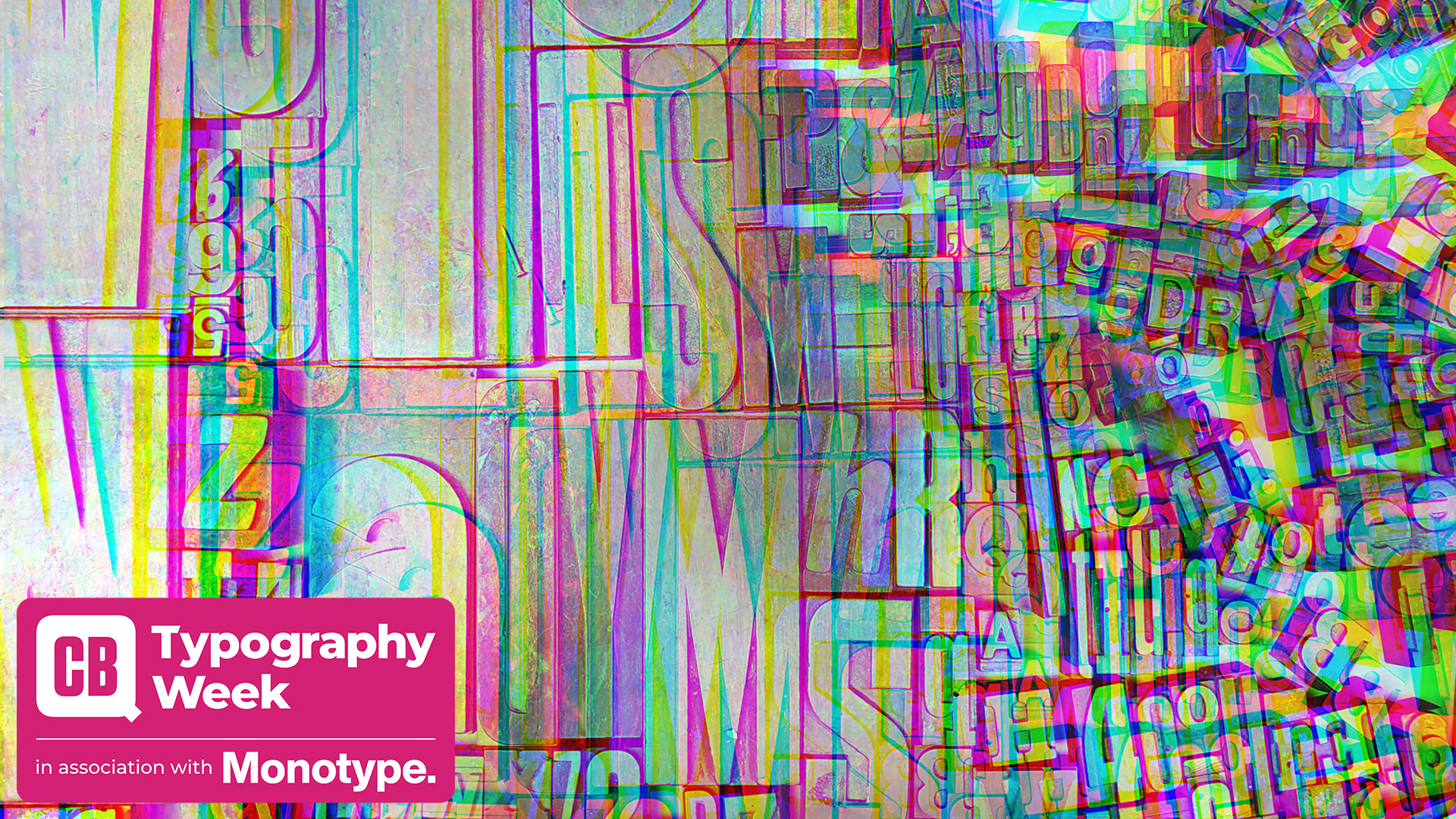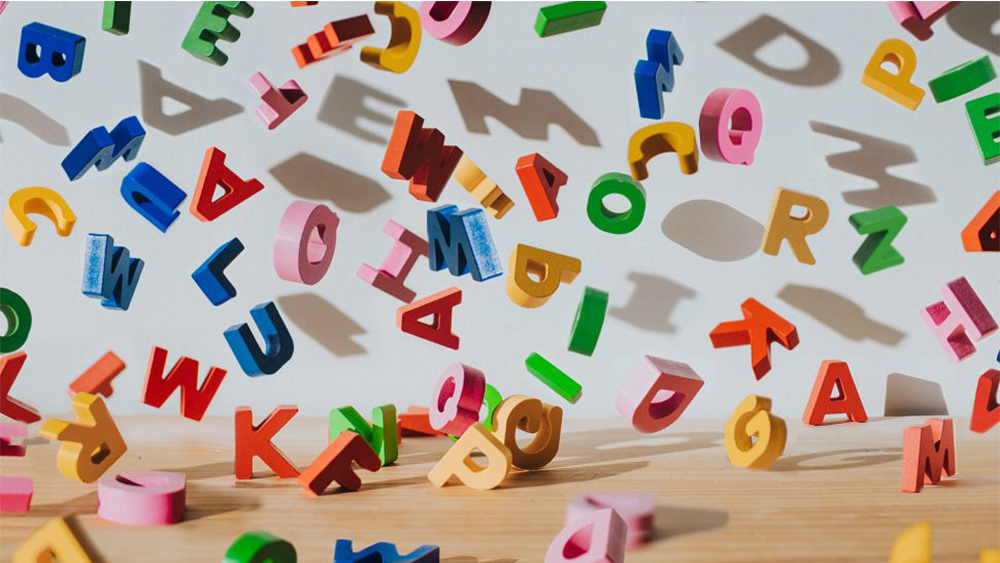Why typographers don't need to worry about AI
Two experts reflect on how AI is changing the industry, and why there's no need to panic.

AI is affecting all of the creative industries and typography is by no means immune. Should typographers worry? Well, that depends on how you look at it, and it also depends on how immersed you are in the industry, are you designer with a passing interest in the best free fonts who occasionally does typography tutorials, or are you living and breathing type?
As part of Typography Week, I spoke to two people in the latter category to discover their thoughts (we also covered how AI is changing typography in more depth). Tom Foley and Tom Rickner both work for Monotype: Tom Foley as executive creative director, and Tom Rickner as senior studio director. I'll refer to them from now on as Tom F and Tom R.
"Generative AI represents such an open-ended set of opportunities and threats," says Tom R. "It will not be all bad or all good. But that is true of any revolutionary technology. I am optimistic about the human need to create, and therefore think that we will learn how to apply generative AI to those problems or challenges which aren’t necessarily artistic in nature, but rather production oriented."

Tom Rickner is senior studio director at Monotype with a career in type that spans more than three decades. During that time, he has mastered nearly every aspect of type design and font production, from his earliest days editing bitmaps, to designing some of the very first Multiple Master fonts for Adobe and TrueType GX Variations fonts for the Font Bureau and Apple, where he was also a pioneer of variable type.

Tom R believes that AI could help with process. "I can see us using it to take original sketches, and more quickly bring a concept to a prototype stage. Or to take an existing weight and help us generate new masters to expand the design space for a family. Or help take a set of carefully hand-tuned kern pairs, and learn to apply that to entire typeface."
While Tom F thinks that AI's use most likely lies in automating tasks. "AI will likely automate many applications of typography, especially in use cases where scale and accuracy are important – like asset creation for large brands," he says. "It also make it easier to make something using type that looks aesthetically pleasing."

Tom Foley is an executive creative director for Monotype, and in his role, is responsible for leading a team of type designers creating fonts for the Monotype Library and corporate brands. Words and letters are in Tom’s blood - his great-grandfather was from a family of stonemasons that specialized in letter carving, and his uncle was a sign painter.
There is a lot of room for improvement in the current typographic landscape
Tom Foley
All this talk of AI also gives us an opportunity to reflect on where the type industry is at the moment, and identify areas that need work: "If we park the fears around replacement, and the buzz noise around efficiency, and take an objective look at where we are now in terms of typography, there is a lot of room for improvement in the current typographic landscape, which won’t be solved by current technology," says Tom F.

AI could potentially reduce the amount of poor typography we see while increasing the amount of good typography we see
Tom Foley
"What I mean here is the mainstream use of typography. Stuff designed-at-scale for big brands, website template services, the school bake sale flyer, the sign above the local butchers... There is currently a fairly wide gap between what us designers call good typography, and how typography exists in the real world. AI could potentially reduce the amount of poor typography we see while increasing the amount of good typography we see," he continues.
Daily design news, reviews, how-tos and more, as picked by the editors.
How will AI impact the work of really good typographers? Tom F feels less clear on this point, but gives the example of "people like Astrid Stavro, Selma Loch (of Kilo Type), Matt Willey, Paulus Dreibholz, Francesca Bolognini, Naima Beb Ayed, Hugh Miller, Bryan Edmondson... I could go on and on... These are type designers and typographers that can use typography as means of visual celebration, cultural commentary, and expression of deep meaning. Despite how much I read about the current and potential capabilities of AI, and on some level I objectively see the threats, I can’t see how AI, without the lived experiences that people bring to their work, can produce typefaces and typography that will move me in the way that the work of people I mentioned above does."
This isn't an easy feeling, says Tom F, but he has ways of dealing with it: "I also feel the anxiety that comes from not knowing to what extent AI will automate aspects of design craft and execution. When I feel this anxiety bubble up inside, I recite this quote from Marshall McLuhan to myself: “There is absolutely no inevitability as long as there is a willingness to contemplate what is happening”. What is happening is a wave of technology that will change so many aspects of our world.
The surest way I know to make someone worry, is to simply say, 'don’t worry!'
Tom Rickner
"The real threats of AI are its potential to give individuals with bad intentions the capability to carry out acts that have negative global consequences. Understanding the bigger picture of the subject helps with perspective. AI is a potential threat to humanity, so in this context my concerns of job security are not that worrisome. Worrying is normal, and it can be crippling. But, we need to find ways to worry, while also facing the challenges and threats posed to our industry and skills by AI. Use the tools, embrace the speed that they may bring to your workflows, but try not to worry. Its a useless endeavor. On one hand, AI is a fast-moving tech bubble, it’s a buzz word, and its poorly understood by most people."
"The surest way I know to make someone worry, is to simply say, 'don’t worry!'" muses Tom R. "So I’m not about to tell anyone else how to feel about AI."
This article was produced as part of Typography Week, held in association with Monotype.

Rosie Hilder is Creative Bloq's Deputy Editor. After beginning her career in journalism in Argentina – where she worked as Deputy Editor of Time Out Buenos Aires – she moved back to the UK and joined Future Plc in 2016. Since then, she's worked as Operations Editor on magazines including Computer Arts, 3D World and Paint & Draw and Mac|Life. In 2018, she joined Creative Bloq, where she now assists with the daily management of the site, including growing the site's reach, getting involved in events, such as judging the Brand Impact Awards, and helping make sure our content serves the reader as best it can.
